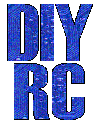A lil' history ...
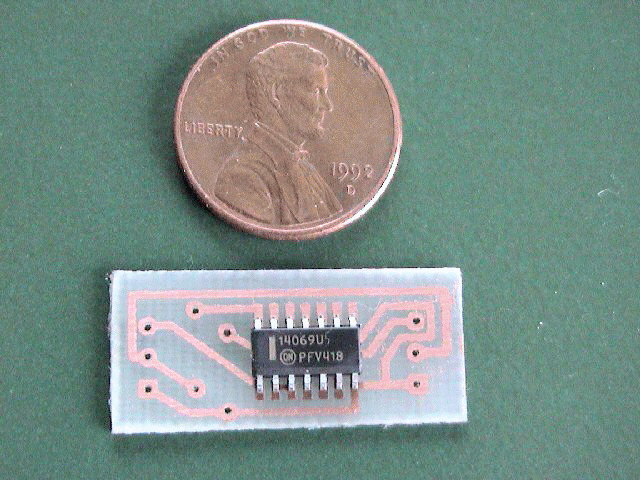 This project involves the building of a simple R/C Servo "Noise Trap" device
that simply suppresses and amplifies the receiver's servo signal before it is
applied to the actual servo. In the past, the use of long servo wires
and/or ignition type engines made the R/C electronic systems susceptible to RF
noise (i.e. Electro-Magnetic Interference or EMI). Servo
leads/wires/extensions, particularly long leads, can often act as RF antennas,
allowing EMI to get propagated back into the R/C electronics, with the potential
of causing havoc.
This project involves the building of a simple R/C Servo "Noise Trap" device
that simply suppresses and amplifies the receiver's servo signal before it is
applied to the actual servo. In the past, the use of long servo wires
and/or ignition type engines made the R/C electronic systems susceptible to RF
noise (i.e. Electro-Magnetic Interference or EMI). Servo
leads/wires/extensions, particularly long leads, can often act as RF antennas,
allowing EMI to get propagated back into the R/C electronics, with the potential
of causing havoc.
This device, based upon a cheap 4069 Hex Inverter, includes a 8 pin DIP (or
surface mount device component as shown in picture), one .01uf capacitor and one
1K ohm resistors.
Design Criteria Summary:
1) Small/Compact device
2) Self-powered (via servo leads) device
3) Minimal components (3 not counting circuit board or connectors)
4) Buffering/Amplifying capability
Parts & Tools List
...
1) 1 -
Hex Inverter IC (preferably 4069.. I have not tested/designed with any other IC)
2) 1 - 1K ohm resistor
3) 1 - .01uF Capacitor (voltage rating should be at least equal if not greater
than supply voltage)
A
circuitboard facilitates assembly of course...
Building Instructions...
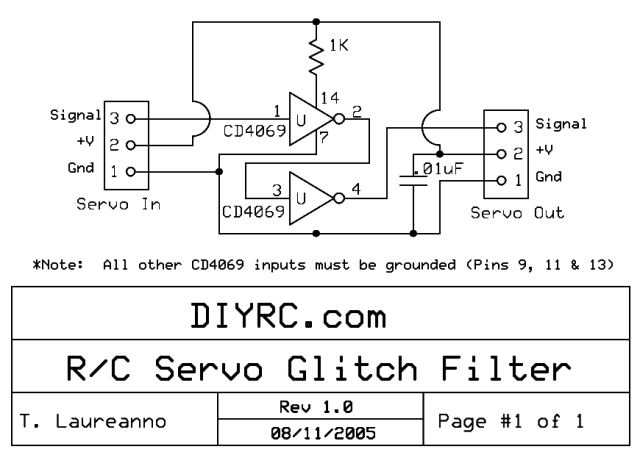 The
schematic to the left tells the whole story... simple design to say the least!
The
schematic to the left tells the whole story... simple design to say the least!
... more coming soon...
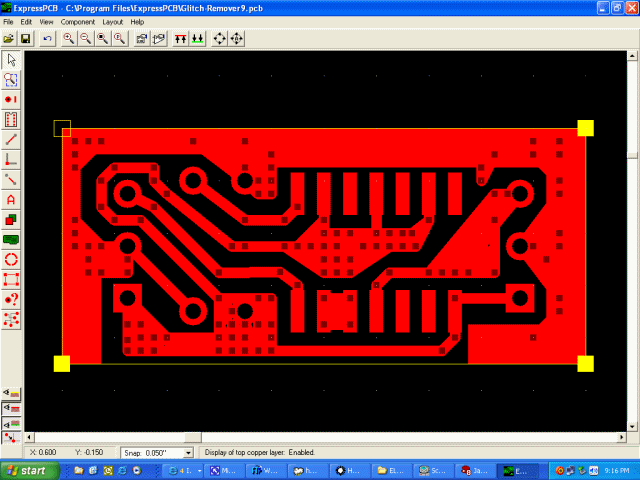
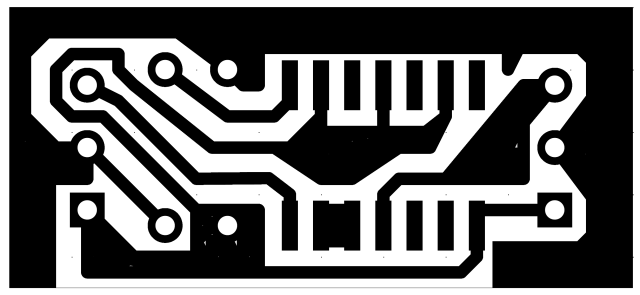
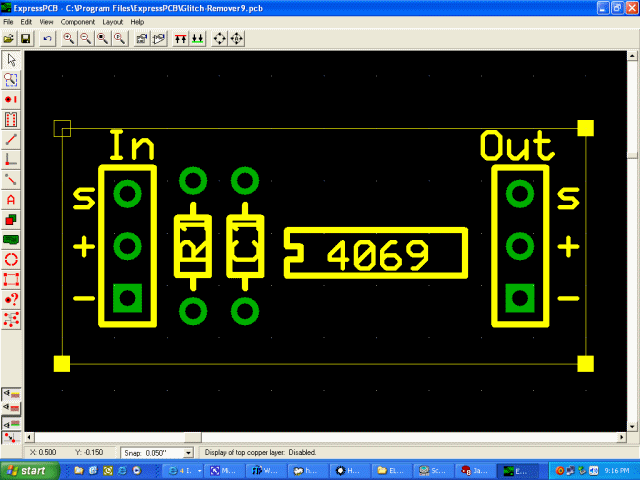
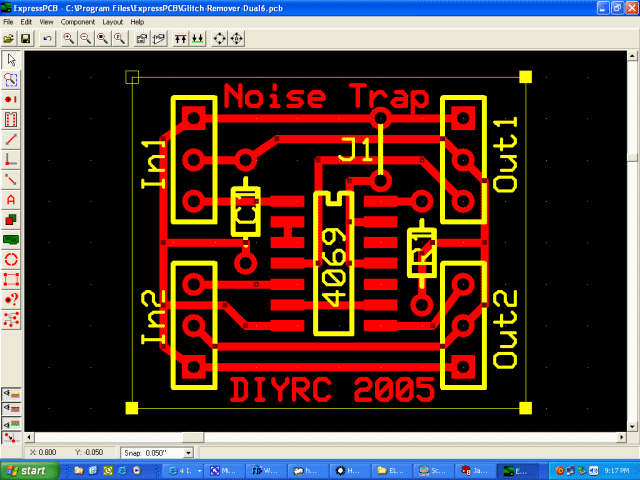
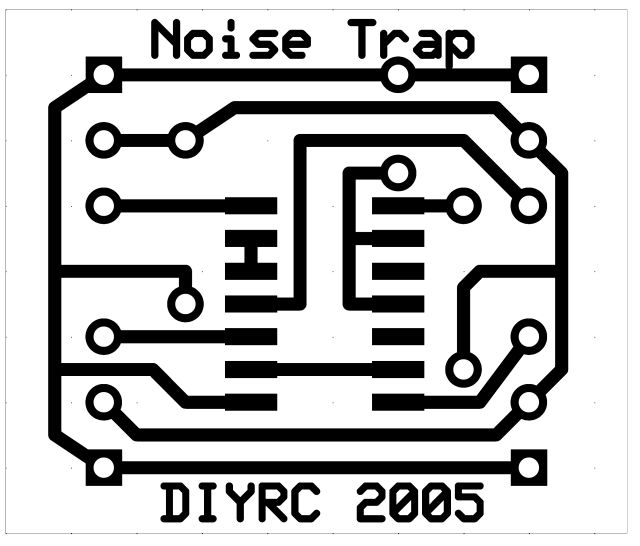
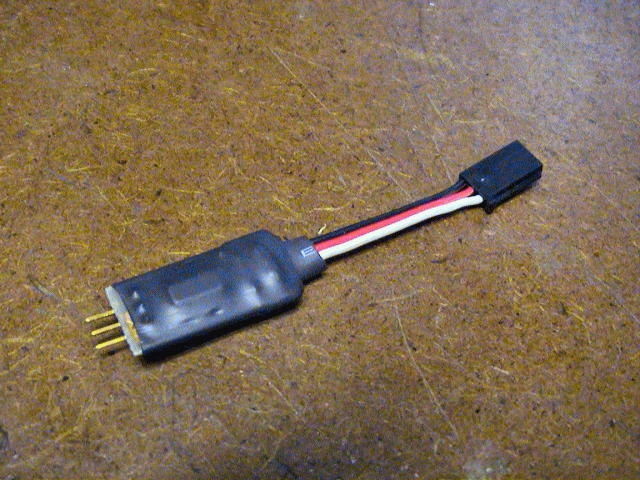
Testing & Operating Instructions...
The servo signal supplied by the receiver is
connected pin 1 of the 4069 IC. This amplified servo signal is then
supplied at pin 2 (inverted), and in order to recover the signal, we need to
invert it once again by connecting the first buffer output (pin 2) to pin 3
(input) of the second buffer. The output of this second buffer (pin 4)
will contain the amplified and buffered servo signal. Noise or
interference picked up by long servo leads are "cleaned up" by the two inverting
buffers. The filter capacitor is included to reduce EMI noise from devices such
as noisy servo motors and motor speed controllers while the resistor simply
limits the current supplied to the IC.
Additional Notes...
More to come
soon.....

Earthmen
Productions
© Dec-00-Mar-12


Home | 360 degree Servo | Optoisolators | Servo Noise Traps | Servo Reversers | Servo Reverser | Servo Failsafes | Servo Fail-Safe | Servo Slow-Down | Servo Panner | Servo Sequencer
